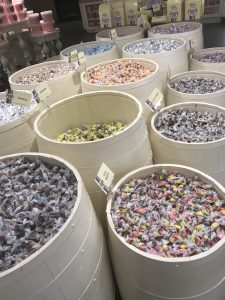The finished piece!
Month: January 2018
In Progress Screen Shot
The painting I used to crop my face into is called Time Flies by Frida Kahlo. I chose this painting because I have always loved Kahlo’s work and the idea she has of purity of herself. She doesn’t try to alter her facial hair and often embodies strength in her paintings. To edit my face onto the painting, I first had to take a color swatch of the painting’s face and a color swatch from mine. From here you use the color curve to obtain the color numbers. Changing the output of the numbers allowed for my face to have a mask layer that matches the color of Kahlo’s. After this, parts on my face were deleted and the obscurity was played with to get a proportional picture. From here, the polygon tool was used to add texture and color back into the picture.
Color
Photoshop Color Manipulation
Greyscale:
To convert an image to greyscale, you go to the tab at the top of the page named image, scroll down to mode, then click greyscale.
Monotone:
To convert an image to monotone you must first follow the steps to convert it to greyscale, then go back to the image tab, scroll down to mode, then choose duotone.
Desaturate:
To desaturate an image you must go to the image tab at the top of the page, scroll down to adjustments tab, and choose desaturate.
Channel Mixer:
To use channel mixer on an image you must go to the bottom right corner of the screen and click the circle that is half shaded. From here you will get a red, blue, and green scale which you can alter the color of the picture with.
Elements of Art & Principles of Design
Elements of Art
Principles of Design
Hello world!
Welcome to u.osu.edu. This is your first post. Edit or delete it, then start blogging!




















